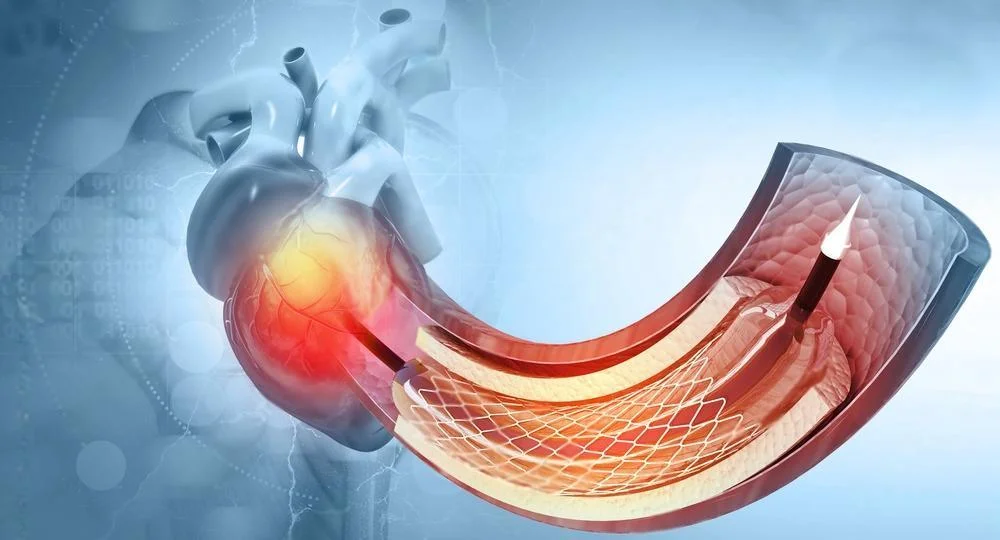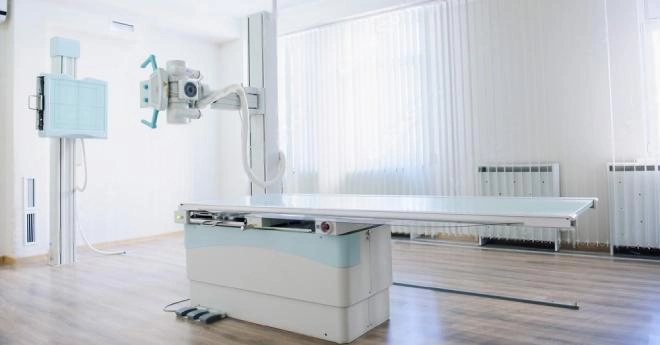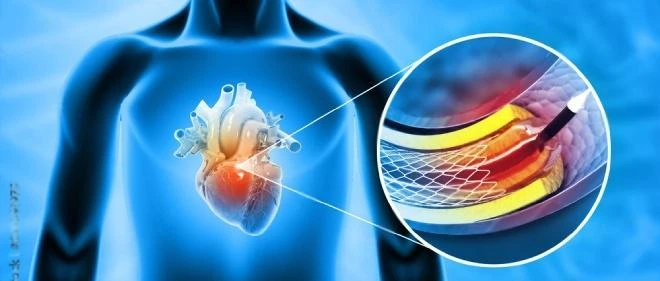Angiography is an imaging test used to view the blood vessels and organs of the body. It is used in Diagnosing and treating various medical conditions, such as coronary artery disease, Aneurysms, blockages, narrowing of the arteries, kidney or liver problems, and tumours.

The purpose of angiography is to provide doctors with detailed images of the body's internal structures so they can diagnose and treat any medical condition that may be present.
The information from these images can also help doctors plan surgeries if necessary. Angiography involves injecting a small amount of contrast dye into a blood vessel to be visible on an x-ray or other imaging tests.
Angiography can provide important information about many conditions that involve blood vessels and organs.
For example, it can identify narrowing or blockages in the Coronary Arteries that Can Lead to Heart Attack or stroke if not treated properly. It can also detect aneurysms—weak areas in the walls of blood vessels; this testing helps doctors decide if surgery is needed to repair these weakened areas before they rupture.
Angiography plays an important role in patient care by helping doctors accurately diagnose medical conditions quickly. With accurate diagnoses come treatments that could extend or even save lives. Patients should understand what angiography entails, so they know the potential risks and benefits of this diagnostic procedure.
Don't let your heart condition go Unnoticed. Our Angiography specialists in Pune are here to offer you comprehensive treatment and accurate diagnoses. Book an appointment at Cardiomet Clinic and take the first step towards better heart health.
Types of Angiography

Coronary Angiography - is an imaging test that uses contrast dye to capture images of the coronary arteries and assess blood flow to the heart muscle. It is used to diagnose coronary artery disease, Heart Attack , blocked arteries, and other conditions that can affect the heart.
Cerebral Angiography - is a procedure used to evaluate the blood vessels in the brain and identify any blockages or abnormalities. It can determine if there are abnormal connections between major arteries in the brain or detect aneurysms in which there is a weakened area on a vessel wall.
Peripheral Angiography - is an imaging technique used to view the blood vessels outside the heart and brain, such as those located behind the eyes, in arms and legs, and intestines. It is used to diagnose conditions such as embolism or arterial blockage.
These types of angiography provide different information about different body parts; however, all three types involve injecting contrast dye into a blood vessel so it can be seen on an x-ray or other imaging tests.
The information from these images can help doctors accurately diagnose medical conditions quickly and begin treatment sooner rather than later for improved outcomes for patients.
Procedure
Before a patient undergoes angiography, they must discuss with their doctor any allergies, medications, and medical conditions they have. The doctor may also send the patient for Blood Tests to check for kidney function before the procedure.
On the day of the procedure, patients will usually be asked to change into a gown and lie on an x-ray table. A short-acting sedative may be administered to help them relax during the procedure.
The technician will inject a small amount of contrast dye into one of the patient's arteries using an IV or catheter. This dye lets doctors obtain detailed images of the body's internal structures as it flows through them.

Once injected, patients may experience a warm sensation in their body and a metallic taste in their mouth—this is normal and should pass quickly.
Afterward, multiple x-rays are taken from different angles to capture images of blood vessels and organs. Patients may need to remain still for up to 15 minutes and can breathe normally throughout the process.
After all, images have been captured, the procedure is complete, and patients can go home afterward with no recovery time required.
Angiography is generally very safe; however, there are some potential side effects, like mild allergic reactions or kidney damage caused by contrast dye overuse, that patients should be aware of before undergoing this test.
Patients should always discuss any concerns they might have with their doctor beforehand so they can make an informed decision about whether or not angiography is right for them.
In search of top-notch Angiography treatment in Pune? Look no further. Our skilled Angiography surgeons at Cardiomet Clinic are ready to provide you with exceptional care. Schedule an appointment now and prioritize your heart health.
Benefits
Angiography is an invaluable tool for Diagnosing and treating various cardiovascular conditions. It can help doctors detect coronary, cerebral, and peripheral artery blockages that could lead to major health problems such as heart attacks and strokes.
Additionally, angiography can treat existing conditions by opening blocked arteries with minimally invasive procedures like stents or bypass surgery. These surgeries often improve patient quality of life drastically by restoring blood flow and reducing the risk of further deterioration caused by the condition.

Furthermore, angiography has been proven effective in preventing potential cardiac events from occurring by identifying individuals at high risk for complications due to their unique anatomy.
For example, Angiography may find blockages in coronary arteries that would not show up on other imaging tests, providing important insight into someone's likelihood of suffering from a heart attack or stroke.
Overall, angiography has been proven to be an invaluable diagnostic and therapeutic tool, with numerous success stories demonstrating its efficacy in addressing various medical conditions.
Angiography and Angioplasty are commonly used in the diagnosis and treatment of heart-related conditions, helping doctors assess and improve the health of the cardiovascular system.
Want to know more about Angioplasty? Dive into our informative resources to expand your knowledge on this effective treatment option for coronary artery disease and its potential benefits for your heart health. And What to expect during Angioplasty Surgery?
Risks
During an angiography procedure, there are a few risks that patients should be aware of. The most common risk is an allergic reaction to the contrast dye used to produce detailed images of the patient's internal structures during the procedure.
To minimize this risk, doctors suggest patients discuss any allergies with their physician before undergoing any test or procedure.

In addition to potential allergic reactions, patients may experience minor bleeding at the catheter insertion site and bruise around the area. This can usually be prevented by applying direct pressure 10-15 minutes after removing the catheter.
Although complications from angiography are rare, in some cases, patients may develope blood clots or suffer from excessive bleeding due to artery damage caused by the procedure. If these complications occur, they will likely require further medical treatment.
But Cardiomet Clinic focus on safety and expertise, and stands out as the premier destination for Angioplasty surgery in Pune.
Overall, although there are risks associated with angiography, these risks can usually be minimized with proper preparation and care taken before and after the procedure. Patients must follow their doctor's advice to ensure a successful outcome from their angiography procedure.
Recovery
After undergoing angiography, patients should take time to rest and avoid strenuous activity. Generally, limiting activities to short walks and other light forms of exercise is best. Additionally, it is important to follow any instructions the doctor gives regarding specific restrictions that might apply depending on the area of the body where the catheter was inserted.

Patients may also experience discomfort or mild pain at the insertion site after their procedure. Doctors recommend over-the-counter medications like ibuprofen or acetaminophen to manage any such discomfort. Hot or cold packs can also be used for temporary relief.
Patients must listen to their bodies during recovery to ensure they are not engaging in activities that are too taxing for them. If pain persists for more than 24 hours after the procedure, patients should consult their doctor as soon as possible for a proper medical evaluation.
Overall, following medical advice and common sense is key when recovering from an angiography procedure; taking proper care of oneself during this period will ensure a successful recovery with minimal discomfort and complications.
Preparation
Before undergoing angiography, patients should take a few steps to prepare properly for the procedure.
Patients must discuss any allergies they may have with their doctor, as this will help to prevent potential allergic reactions to the contrast dye used during the exam.
Patients should also disclose any medications they're taking, as some can cause complications during the procedure or alter their results.
On exam day, patients should wear loose-fitting clothing and avoid wearing jewellery or other metal accessories. Additionally, since food and drinks might affect the accuracy of angiography results, it is recommended that patients avoid eating or drinking anything for at least 8 hours before their appointment.
Overall, by following these steps and discussing any additional instructions their doctor provides before angiography, patients can ensure that they are properly prepared for their procedure and ready for a successful outcome.
Follow-up Care
After undergoing angiography, following up with the doctor and receiving any necessary treatment or modifications is important. During a follow-up appointment, patients may need to make certain changes to their lifestyle or medications to maintain optimal health.
Depending on the procedure's outcome, a doctor may recommend taking specific medications or making dietary adjustments to lower cholesterol levels, reduce high blood pressure, control diabetes, and improve circulation.
In some cases, doctors may also advise quitting smoking and avoiding alcohol use to prevent further complications.
It is essential that patients adhere to their doctor's instructions during this period of recovery and not forget about regular visits for checkups and tests. Following these instructions and staying informed about any changes needed during recovery, patients can ensure a successful outcome from their angiography procedure.
Conclusion
Angiography is a vascular imaging procedure that can help to diagnose and evaluate different medical conditions.
To ensure a successful outcome, it is essential that patients properly prepare for the exam by discussing any allergies they may have, disclosing all medications they are taking, wearing loose-fitting clothing, and not eating or drinking anything for at least 8 hours before their appointment.
Following the procedure, patients should follow up with their doctor to receive additional treatment or make lifestyle modifications as recommended.
Overall, angiography is an essential procedure in helping to diagnose and treat various medical conditions. Those who may benefit from this procedure should contact their cardiologist for further information.


